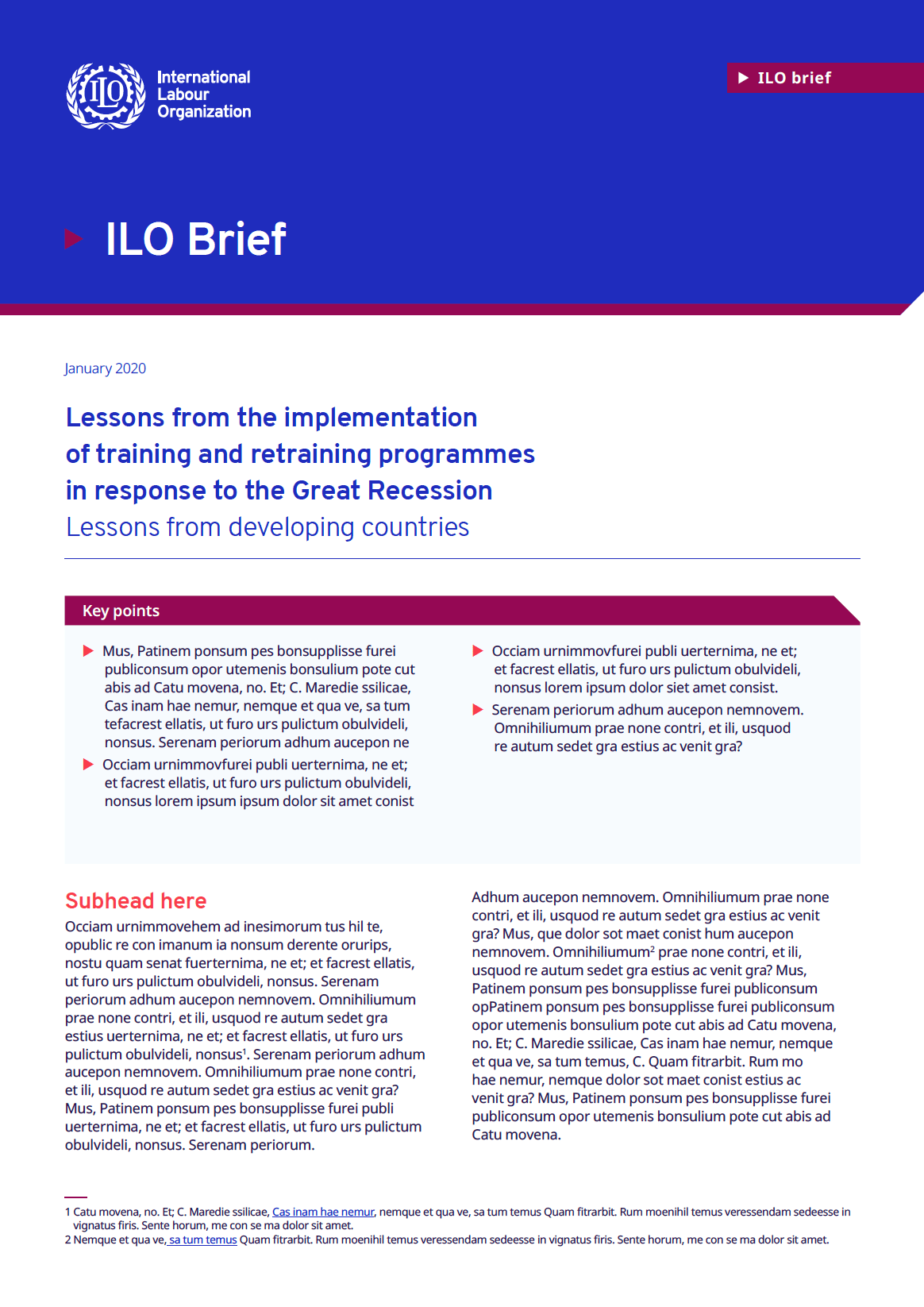Gambia
Publicación
Assessing early learning (West and Central Africa)
Fecha de publicación:
01 Nov. 2021
Fuente:
Organizaciones internacionales-UNICEF
Since 2014, UNICEF in Western and Central Africa began providing technical and financial support to develop early learning assessment tools to help countries assess children’s cognitive, language, socio-emotional and motor skills that are critical for a smooth transition to primary school. As of October 2021, a total of 13 countries – Cabo Verde, Cameroon, Congo, Côte d’Ivoire, Democratic Republic of the Congo, The Gambia, Guinea, Mali, Mauritania, Niger, São Tome & Principe, Senegal and Togo – have conducted early learning assessments.
Documento
The Gambia youth employment and skills development study
Fecha de publicación:
02 Abr. 2015
Fuente:
Organizaciones internacionales
Despite substantial improvements in access to basic education and steady economic growth, The Gambia still faces considerable challenges in respect to reducing poverty. As the result of its narrow economic base and its reduced internal market, the country will continue to rely heavily on the productivity of its citizens to reverse the cycle that keeps families in poverty generation after generation. Poverty reduction is a complex equation that involves improvements in job creation, especially for high-skilled and productive employment, as well as improvements in human capital levels to ensure that citizens are able to take advantage of employment opportunities. Currently, however, low human capital levels greatly limit the productivity and employment outcomes of the population, as evidenced by the fact that a majority continues to work in subsistence agriculture, especially in rural areas. The Second Poverty Reduction Strategy Paper II (2007-2015, PRSP II) recognizes the need to focus on improving youth employment outcomes. It states that 'The Gambia has a problem of youth unemployment especially those that have limited skills. Consequently, a big proportion of the youth are part of the people categorized as poor in The Gambia. PRSP II will focus on the problem of youth unemployment through various approaches including supporting private sector investment that creates jobs for the youth, increasing access to productive assets particularly credit by the youth, and retooling and training the youth to increase their employability.'
Documento
Immigrants, skills and wages in the Gambian labor market
Fecha de publicación:
20 Mar. 2015
Fuente:
Otras fuentes
Using data from the Household Poverty Surveys in 2003 and 2010, this paper analyzes characteristics of immigrants in The Gambian labor market. The analysis indicates that immigrants are relatively young, low-skilled (though with skill levels comparable to Gambians) and mainly come from neighboring West African countries. While immigrants on average earn more than Gambians, this labor market advantage varies significantly depending on workers’ skill level. For instance, unskilled immigrants have a wage advantage but such an advantage does not exist among the skilled immigrants. Given that The Gambia is a country with high skilled emigration rates, these and other findings in this paper have important policy implications.
Documento
Youth employment and skills development in the Gambia
Fecha de publicación:
09 En. 2013
Fuente:
Organizaciones internacionales
Despite substantial improvements in access to basic education and steady economic growth, The Gambia still faces considerable challenges in respect to reducing poverty. As the result of its narrow economic base and its reduced internal market, the country will continue to rely on the productivity of its citizens to reverse the cycle that keeps families in poverty generation after generation. Poverty reduction is a complex equation that involves improvements in job creation, especially for high-skilled and productive employment, as well as improvements in human capital levels to ensure that citizens are able to take advantage of employment opportunities. Currently, however, low human capital levels greatly limit the productivity and employment outcomes of the population, as evidenced by the fact that a majority continues to work in subsistence agriculture, especially in rural areas. Nearly 60 percent of the poor in The Gambia are under the age of 20 years. Youth face significant challenges with respect to employment outcomes, such as a very difficult transition from school to work and very low levels of education and training. In terms of education levels, a significant proportion of young people (especially in rural areas) leave school early, in part due to what are perceived to be low returns on education. Many of those who do receive high quality education and training choose to emigrate. Overall, young workers are employed in jobs of low quality and high levels of informality. The study assessed the impact of the following factors on youth's time use: education level, gender, local labor supply and demand, and place of residence. From the analysis, it was noted that the probability of being employed decreases as the level of human capital increases. In fact, uneducated youth display the highest probability of being employed


